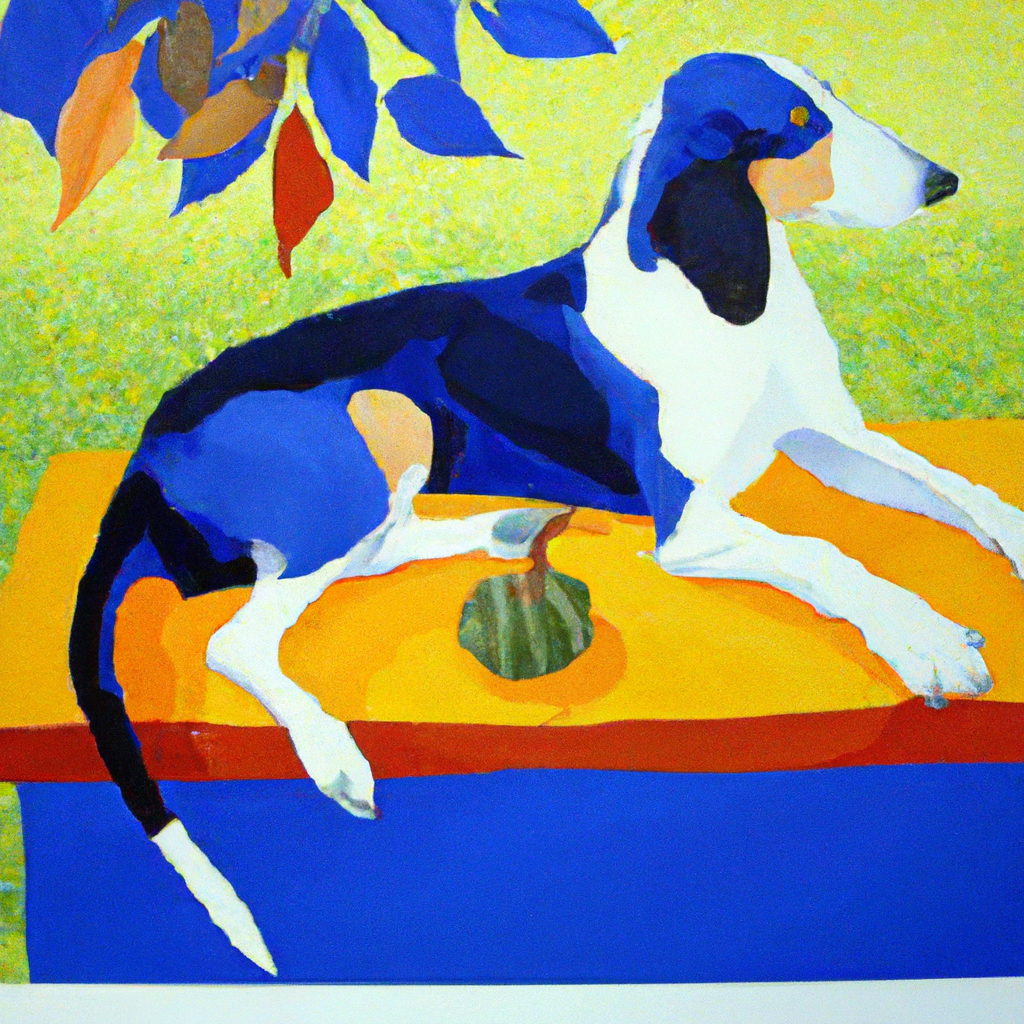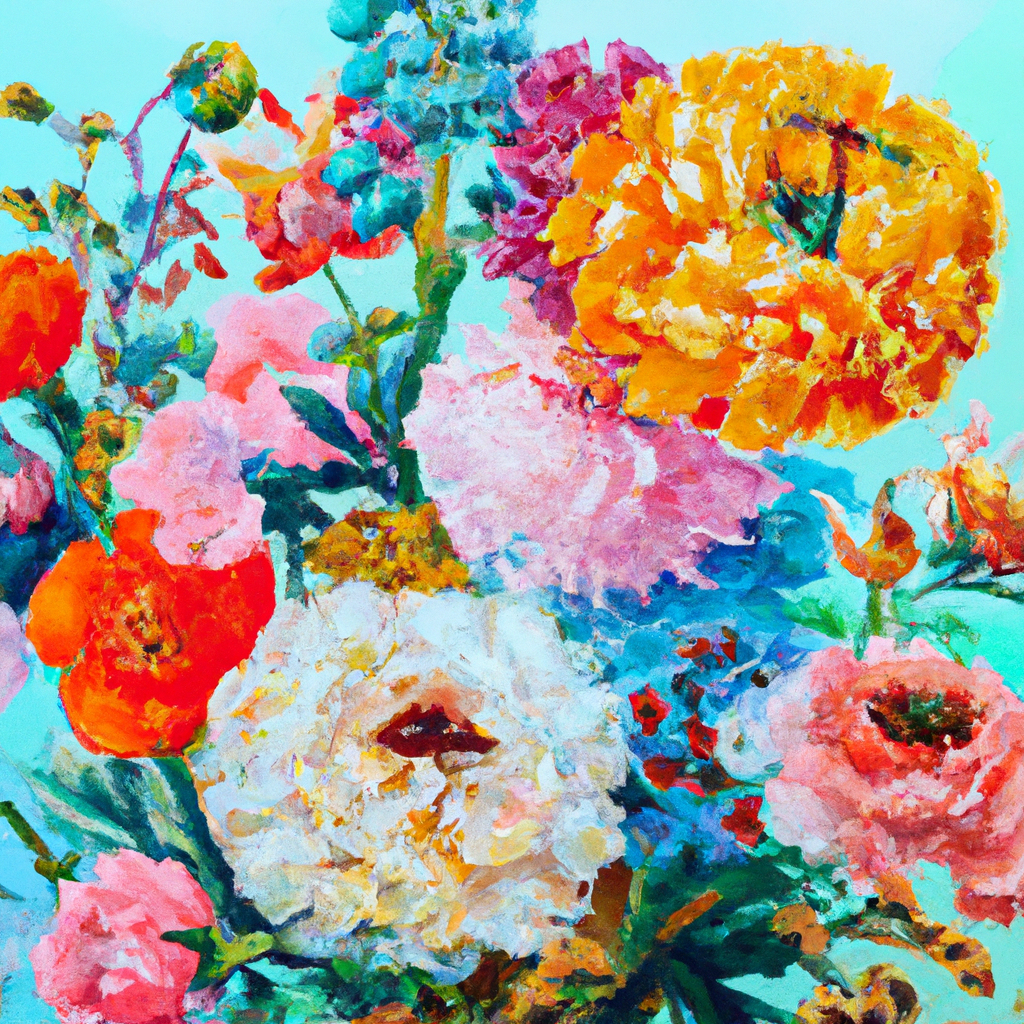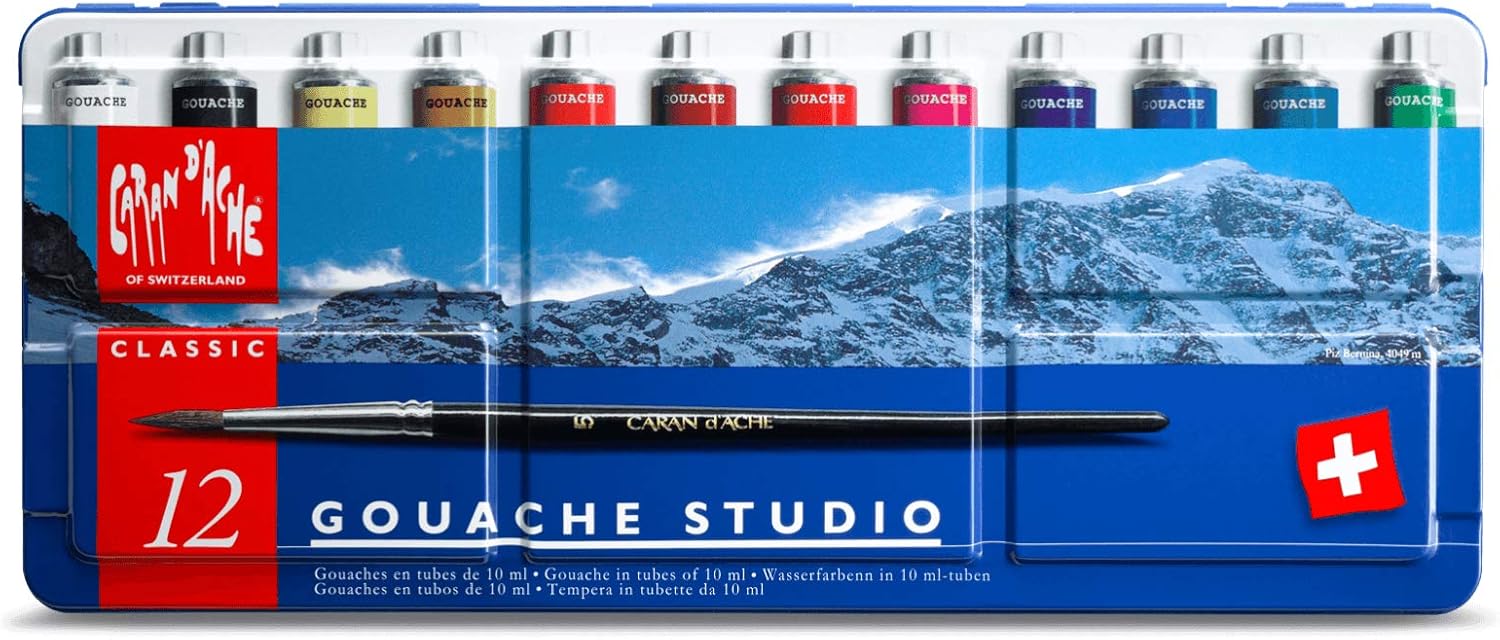In the world of art, there are countless mediums and techniques that have captivated artists throughout history. One such medium that has undergone a remarkable evolution is gouache painting. Originating from ancient Egypt, where it was used to decorate tombs, gouache has traversed time and geography to become a highly regarded and versatile tool for artists today. This article will trace the fascinating history and evolution of gouache painting, shedding light on its unique characteristics and its significance in the art world. From its humble beginnings to its resurgence in modern times, discover the enchanting journey of gouache painting and its enduring appeal for artists and art enthusiasts alike.

This image is property of images.unsplash.com.
Historical origins
Origins in ancient Egypt
Gouache painting, also known as opaque watercolor, has a rich history that dates back thousands of years. Its origins can be traced back to ancient Egypt, where the Egyptians used a combination of pigment and gum arabic to create vibrant and opaque paintings. These early gouache paintings were often used for decorative purposes, such as adorning tombs and temples. The Egyptians valued gouache for its ability to create bold and vivid colors that would last for centuries.
Development in medieval Europe
During the medieval period in Europe, gouache painting experienced a resurgence in popularity. It was during this time that manuscript illuminators began to use gouache to add vibrant colors and details to their intricate illustrations. Gouache was particularly well-suited for this purpose, as its opaque nature allowed for precise and detailed work. The development of gouache painting during this period laid the foundation for its future use in religious art and miniatures.
Popularity in the Renaissance
The Renaissance marked a significant turning point in the history of gouache painting. Artists began to experiment with new techniques and materials, and gouache emerged as a popular medium for creating detailed and realistic paintings. The use of gouache in the Renaissance allowed artists to achieve a wide range of effects, from delicate glazes to bold and opaque colors. With its versatility and ability to create both fine details and vibrant colors, gouache became a favored medium among artists of the time.
Characteristics of gouache
Definition of gouache
Gouache is a type of paint that is made with a combination of pigment, filler, and a binding agent, usually gum arabic. It is similar to watercolor in terms of its water-solubility, but it differs in that it contains a higher concentration of pigment, resulting in a more opaque appearance. The term “gouache” is derived from the Italian word “guazzo,” meaning “mud” or “puddle,” reflecting the thick and creamy consistency of the paint.
Composition of gouache paint
Gouache paints are typically composed of finely ground pigments, such as natural earth pigments or synthetic colors, mixed with a binder, often gum arabic, and a filler, such as chalk or talc. The addition of the filler gives gouache its characteristic opacity, allowing for vibrant and opaque colors. Additionally, gouache paints may contain additives, such as preservatives or extenders, to enhance its properties and longevity.
Properties of gouache paint
Gouache paint has several distinctive properties that set it apart from other painting mediums. One of its key attributes is its opacity, which allows for bold and opaque colors that can cover previous layers or surfaces. Gouache paints also have a quick drying time, making them well-suited for layering and building up layers of color. The water-solubility of gouache allows for easy manipulation and blending, while its ability to create both fine details and broad strokes makes it a versatile medium for artists.

This image is property of images.unsplash.com.
Early use of gouache
Gouache in manuscript illustrations
One of the earliest and most notable uses of gouache painting was in manuscript illustrations. During the medieval period, illuminators used gouache to add vibrant colors and intricate details to their hand-written books. Gouache’s opaque nature made it well-suited for illuminating manuscripts, as it allowed for precise and detailed work. The use of gouache in manuscript illustrations not only added aesthetic appeal but also conveyed symbolic and narrative elements within the intricate designs.
Gouache in religious art
Gouache painting also played a significant role in religious art throughout history. The rich, opaque colors of gouache were often used to depict religious figures, scenes, and symbols in paintings. The ability of gouache to create luminous and intense colors made it an ideal medium for portraying the divine and capturing the attention of viewers. From medieval religious paintings to Renaissance altarpieces, gouache was instrumental in conveying the spiritual and emotional qualities of religious art.
Gouache in miniatures
Miniature paintings, characterized by their small size and intricate details, also benefited from the use of gouache. Gouache’s opaque and vibrant colors allowed artists to create stunning miniature compositions that were rich in detail and color. Miniatures, often found in illuminated manuscripts or small-scale portraits, required meticulous execution, and gouache provided artists with the necessary tools to achieve intricate and precise effects. The combination of gouache’s vivid colors and the meticulous craftsmanship of miniature paintings resulted in mesmerizing works of art.
Gouache in the modern era
Revival of gouache in the 19th century
After a period of relative decline, the 19th century witnessed a revival of interest in gouache painting. Artists, such as Eugène Delacroix and J.M.W. Turner, explored the possibilities of gouache as a medium for landscape and figure painting. The increased availability of commercially produced gouache paints, along with the growing interest in capturing atmospheric effects and vivid colors, contributed to the resurgence of gouache in the art world.
Gouache in the Art Nouveau movement
The Art Nouveau movement of the late 19th and early 20th centuries embraced the unique qualities of gouache painting. Artists such as Alphonse Mucha and Aubrey Beardsley utilized gouache to create stylized and decorative works characterized by sinuous lines and vibrant colors. Gouache’s ability to achieve both bold and delicate effects made it an ideal medium for capturing the organic and intricate forms of the Art Nouveau style.
Gouache in contemporary art
In contemporary art, gouache continues to be a popular choice among artists seeking a versatile and expressive medium. Artists like Agnes-Cecile and Morgan Davidson have gained recognition for their masterful use of gouache to create highly detailed and emotive artworks. Gouache’s ability to create both opaque and transparent effects, along with its versatility for layering and blending, has made it a favored medium for artists exploring various genres and styles.

This image is property of images.unsplash.com.
Techniques and application
Opaque and layering effects
One of the key techniques in gouache painting is the ability to achieve opaque effects. Unlike watercolor, which is transparent, gouache paint can be applied in thick layers to completely cover the surface or previous layers. Artists often utilize this property to create solid blocks of color or to hide underlying layers, adding depth and vibrancy to their compositions. The opaque nature of gouache also allows for the creation of textures and impasto effects, adding further dimension to the artwork.
Wet-on-dry and wet-on-wet techniques
Gouache can be applied using different techniques, including wet-on-dry and wet-on-wet. In the wet-on-dry technique, artists apply wet gouache paint onto a dry surface, allowing for controlled and precise brushwork. This technique is often used in areas that require fine details or sharp lines. On the other hand, the wet-on-wet technique involves applying wet gouache paint onto a wet surface, resulting in more fluid and spontaneous brushwork. This technique is commonly used for creating soft gradients or blending colors seamlessly.
Use of brushes and other tools
Brushes play a crucial role in gouache painting, allowing artists to manipulate the paint and create various textures and effects. Different brush types, such as round brushes, flat brushes, and fan brushes, offer different characteristics and applications. Round brushes are commonly used for creating fine details, while flat brushes are ideal for covering larger areas with broad strokes. Additionally, artists may also employ sponges, palette knives, or even their fingers to achieve specific textures or to remove excess paint.
Famous gouache artists
Goya and his use of gouache
Francisco Goya, renowned Spanish painter and printmaker, was known for his use of gouache in his works. Goya often used gouache to create powerful and expressive sketches and studies, emphasizing the contrast between light and dark. His skillful handling of gouache allowed him to achieve dramatic effects and convey emotions with great intensity. Goya’s use of gouache exemplifies the versatility and expressive potential of the medium.
Winsor McCay’s gouache illustrations
Winsor McCay, an American cartoonist and animator, utilized gouache in his iconic illustrations and animations. His vibrant and whimsical artworks, such as the groundbreaking comic strip “Little Nemo in Slumberland,” were brought to life through his use of gouache. McCay’s meticulous application of gouache allowed him to create intricate and dreamlike worlds, showcasing the medium’s ability to evoke imagination and fantasy.
Contemporary gouache artists
In the contemporary art scene, numerous artists have embraced gouache as their medium of choice. Artists such as Audrey Kawasaki, Lisa Golightly, and Alvaro Castagnet have captivated audiences with their mastery of gouache painting. These artists employ the unique properties of gouache to create stunning and highly detailed artworks that range from figurative to abstract. Through their innovative approaches and technical skill, contemporary gouache artists continue to push the boundaries of the medium.

Gouache vs other painting mediums
Differences between gouache and watercolor
Gouache and watercolor share some similarities but also have distinct differences. Both mediums are water-based and can be diluted with water, but gouache contains more pigment and less water, resulting in a more opaque appearance. Unlike watercolor, which is transparent and allows the white of the paper to show through, gouache provides a more solid and opaque coverage. Gouache’s opacity also allows for corrections and layering, making it suitable for both detailed work and larger areas of color.
Comparison with acrylic and oil paint
Gouache differs from acrylic and oil paint in terms of its composition and drying time. Acrylic and oil paints are oil-based and dry to a permanent finish, while gouache is water-based and dries to a matte finish. Acrylic paints offer the advantage of being waterproof and flexible once dry, while oil paints can be layered and manipulated for an extended period. Gouache, on the other hand, dries quickly and can be reactivated with water, allowing for further adjustments or corrections.
Advantages and limitations of gouache
Gouache offers several advantages as a painting medium. Its opaque and matte finish allows for vibrant and vivid colors, while its water-solubility makes it easy to work with and clean up. Gouache also lends itself well to layering and correcting mistakes, making it a forgiving medium for artists. However, gouache does have some limitations. Its matte finish may not be as desirable for artists seeking a glossy or reflective surface. Gouache can also be prone to cracking if applied too thickly or if the painting surface is not properly prepared.
Modern trends and innovations
Digital gouache painting
With the advancements in digital art techniques, artists now have the option to replicate the look and feel of traditional gouache painting digitally. Software programs and digital brushes allow artists to emulate the texture and opacity of gouache, creating digital artworks that closely resemble traditional gouache paintings. Digital gouache painting offers the advantage of easy manipulation, unlimited color options, and the ability to undo or adjust mistakes without damaging the artwork.
Gouache-inspired techniques in digital art
Gouache-inspired techniques have also influenced the development of unique styles and effects in digital art. Artists have adapted gouache’s layering and blending techniques to create digital artworks that mimic the visual qualities of gouache paintings. The use of brushes that replicate the texture and flow of gouache paint, coupled with digital layering and blending modes, allow artists to add depth and dimension to their digital creations. These techniques have expanded the possibilities for digital artists seeking to incorporate the aesthetic appeal of gouache into their work.
New developments in gouache paints
In recent years, there have been advancements and innovations in gouache paints themselves. Manufacturers have introduced new formulations that offer improved lightfastness, ensuring that the colors in gouache paintings remain vibrant and true over time. Some gouache paints are now available in larger tubes or pans, providing artists with more options for larger-scale works. Additionally, there has been a surge in the production of artist-grade gouache paints, offering a wider range of colors and higher quality pigments for artists to explore.

Preservation and conservation
Challenges in preserving gouache artwork
Preserving gouache artwork presents unique challenges due to its water-soluble nature and matte finish. Gouache paintings are more susceptible to damage from moisture, light, and dust compared to other painting mediums. The lightfastness of some gouache pigments can also be a concern, as exposure to UV light may cause the colors to fade over time. Additionally, the level of opacity and thickness of gouache paint can impact the artwork’s overall stability and long-term preservation.
Handling and storage guidelines
To protect gouache artwork, proper handling and storage practices are essential. When handling gouache paintings, it is important to avoid touching the surface directly to prevent smudging or transferring oils from the skin. Framing under UV-resistant glass or using UV-protective varnishes can help minimize light damage. Gouache paintings should be stored in a cool, dry place, away from direct sunlight or extreme temperature and humidity fluctuations. Acid-free materials, such as archival matting and backing, should be used to prevent degradation over time.
Conservation methods and treatments
If gouache artwork requires conservation or restoration, professional conservators employ various methods and treatments to stabilize and preserve the artwork. Surface cleaning, removal of varnish or discolored coatings, and repair of damaged areas are some of the common techniques used in gouache conservation. Conservators may also conduct pigment analysis to identify the type of pigments used in the artwork, aiding in the selection of appropriate conservation materials and techniques. By adhering to conservation principles and utilizing specialized knowledge, conservators ensure the longevity and integrity of gouache artwork.
Appreciation and popularity
Gouache in contemporary illustration
Gouache’s unique properties have found widespread appreciation in the field of illustration. Its ability to create flat, bold colors and rich textures has made it a popular choice among illustrators seeking a traditional yet vibrant medium. Gouache illustrations often exude a sense of nostalgia and authenticity, as they harken back to the illustrative styles of the past. Whether used for children’s books, editorial illustrations, or graphic novels, gouache adds a distinct aesthetic charm to contemporary illustration.
Gouache in commercial art
Gouache has also found a place in the world of commercial art. Its versatility and ability to produce vivid, eye-catching colors make it a favorable choice for advertising campaigns, packaging design, and branding. The unique texture and opaque quality of gouache paintings can help create a tactile and visually engaging experience for consumers. Additionally, the resurgence in interest for handmade and artisanal aesthetics has contributed to the use of gouache in commercial art, as it offers a more authentic and tangible quality.
Growing popularity among artists
In recent years, gouache painting has witnessed a surge in popularity among artists. Its versatility, forgiving nature, and unique aesthetic appeal have attracted both established and emerging artists. Gouache’s ability to seamlessly blend with other mediums, such as pen and ink or colored pencil, allows for limitless possibilities and experimentation. Artists appreciate the tactile experience of working with gouache, as well as the range of effects and techniques that can be achieved. The growing popularity of gouache is a testament to its enduring appeal and its ability to adapt to the evolving needs of artists.



